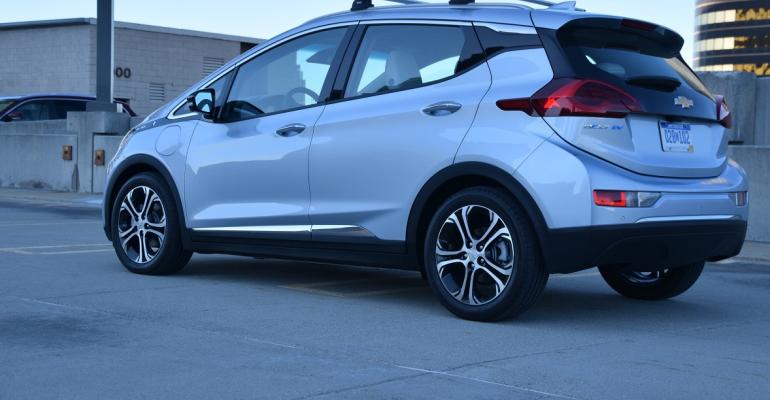What is the impact of electric vehicles today, and what will be the transformative effect on the grid and energy market?
Recent data from the National Renewable Energy Laboratory on battery-electric and plug-in hybrid-electric vehicles shows the U.S. had 764,666 light vehicles sold (third in sales behind Europe and China). BEV and PHEV sales are projected to reach 20 million globally as early as 2025, still less than half of the 76.5 million new LV sales in 2017. The opportunity for growth is significant, as in the U.S. only 0.9% of vehicle sales were BEV/PHEV vehicles.
EVs place demand on the grid as potential “mobile” or roaming point loads, and as potential sources of generation in spot markets for energy or participation in disaster recovery and response. Moreover, EVs depend on charging levels and the time required to charge. This, plus the location of charging, has a significant impact on the growth and overall adoption of EVs. Manufacturers of charging equipment and EV producers need the price-performance curve of charging devices to continue trending toward increased performance at a lower price.
At the center of all EV technology is the need to provide charging. Recent research by the journal Nature Energy provides an excellent overview of the U.S. grid and the impact of uncoordinated EV charging. Its conclusion: Multiple models are required to more accurately characterize and predict the impact before we encounter greater crisis levels on the grid.
Before we do get into a full-blown crisis, here are five things the industry can do to mitigate the impact:
· Close Gap Between Data and Knowledge. Developing multiple model environments is critical, but so is properly leveraging real-time sensor data and few industries have seen the explosive growth of this kind of data as the Smart Grid. Combined, it underscores the huge discrepancy of available data that has not yet been translated into actionable planning and knowledge.
· Focus on Distributing the Problem – and the Opportunity. With the available data sources, targeting an aggressive transition to a much more distributed grid only makes sense. Short of replacing virtually all existing electric infrastructure, the next best option is to distribute generation sources closer to loads and minimize the potential loss or reduction in the interconnected grid strategy. Do not abandon centralized generation or infrastructure; instead, make it more robust and fault-tolerant as we transition to BEV/PHEVs. Specific opportunity targets exist in areas such as deep-sea ports where load and generation possibilities are obvious if the right financial incentives are there for the port owners and operators.
 · Incorporate Greater Levels of Renewable Generation. Existing generation and distribution utilities face planning challenges every day. The ability to incorporate advances in coincident technologies with different market drivers will reduce cost and risk for regulated and deregulated utilities to incorporate more renewable generation. The fact that Lithium-ion battery technology has become the de facto standard in grid-scale energy storage is a great example. The cost and technology drivers for grid-scale energy storage largely are the result of vehicle markets, but utilities benefit from those same cost drivers.
· Incorporate Greater Levels of Renewable Generation. Existing generation and distribution utilities face planning challenges every day. The ability to incorporate advances in coincident technologies with different market drivers will reduce cost and risk for regulated and deregulated utilities to incorporate more renewable generation. The fact that Lithium-ion battery technology has become the de facto standard in grid-scale energy storage is a great example. The cost and technology drivers for grid-scale energy storage largely are the result of vehicle markets, but utilities benefit from those same cost drivers.
· Market Focus on Growth of EVs Beyond Vehicle Sales. Very little of our existing economic and capitalization strategies for residential consumers of BEV/PHEVs consider the trends and desires of potential owners. Regardless of what happens to Tesla in the long run, the impact it already has had on BEV/PHEV adoption, energy storage and charging station planning is profound. But consider other opportunities to embrace market-based strategies to impact the bottom-up approach.
Most people travel beyond the 40-250-mile (65-400-km) range of the typical EV. So where you charge and how you pay for charging are issues and opportunities (remember the early days of cell-phone roaming charges?) that require the same types of advanced modeling and data.
· Localized Generation Reduces Cost/Risk. Local generation can provide cost-effective options for building owners and other businesses; solar and energy storage, in particular, could reduce the apparent demand by BEV/PHEVs on aging infrastructure while lowering energy rates/tariffs. For residential and the community at large, this represents multiple levels of risk mitigation.
EV technology presents either an opportunity or a crisis, depending on how we act. It is worth remembering that the opportunities depend on an interconnected grid and in parallel a communications grid to achieve economic growth while reducing cost and greenhouse gases.
Kevin Meagher (above, left) is a senior consultant with QiO Technologies (https://qio.io/index.html), which uses artificial intelligence to help companies streamline and automate supply-chain and manufacturing workflows and processes.





